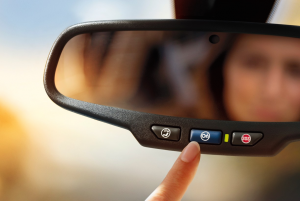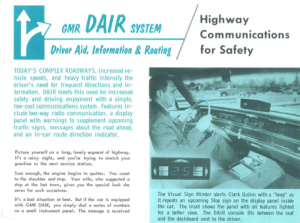Difference between revisions of "OnStar"
| Line 35: | Line 35: | ||
===Arguments Against OnStar -=== | ===Arguments Against OnStar -=== | ||
=References:= | =References:= | ||
| + | =External Links:= | ||
Revision as of 04:13, 21 February 2017
|
OnStar is an encompassing vehicle telecommunication platform that provides emergency, security, navigation, mobile connectivity, and vehicle maintenance monitoring services to its users. The platform is able to automatically alert officials of your location if you have been in an accident, unlock your car remotely if you have locked your keys in the vehicle, provide vehicle tracking if it has been stolen, and more. OnStar provides an experience that more fully integrates your vehicle into your life by making it more communicative while also ensuring that the vehicle is also more autonomous. Conceived and developed within General Motors dating back to 1960s, OnStar is touted as being the way of the future when it comes to interacting with your automobile.
History:
Beginning -
The origin for the concept of OnStar can be found in the creation of the Driver Aid, Information, and Routing (DAIR) System that was originally developed by General Motors engineers in the mid 1960s. The technology was unveiled in two prototype vehicles in 1966 and was capable of providing basic turn-by-turn directions to drivers while also providing feedback to the drivers regarding current road conditions and relaying up-to-date accident reports. The project was brought to an end when it was shown that the overhaul to the American roadway system that would be needed for the product to work reliably and nationally would be be virtually impossible to accomplish.
Evolution -
A similar concept to the DAIR System was started once GPS and wireless communication methods were found to provide the core goals of the DAIR System without completely reworking our roadway systems. The current iteration of OnStar that we would recognize today was officially unveiled at the 1996 Chicago Auto Show and was first made available in 1997 model year Cadillac vehicles. The system was able to connect drivers to 24/7 OnStar concierges who could provide turn-by-turn directions as well as emergency assistance in times of need. The system was touted as being the "world's first in-vehicle, hands-free communication system". By the year 2001, OnStar has also added the ability for drivers to place personal calls, access their email, and hear the latest news broadcasts through their OnStar systems.
Current Status -
As of today, OnStar offers a huge litany of services to its subscribers. Those services can be grouped under five main types of service: emergency, security, navigation, mobile connectivity, and vehicle maintenance monitoring. OnStar is able to call emergency professionals when you have an accident, unlock your car if you have locked the keys in it, provide navigation routes that avoid accidents or traffic jams, provide internet access while you are on the go, tell you when and why your vehicle is malfunctioning, and etc.


